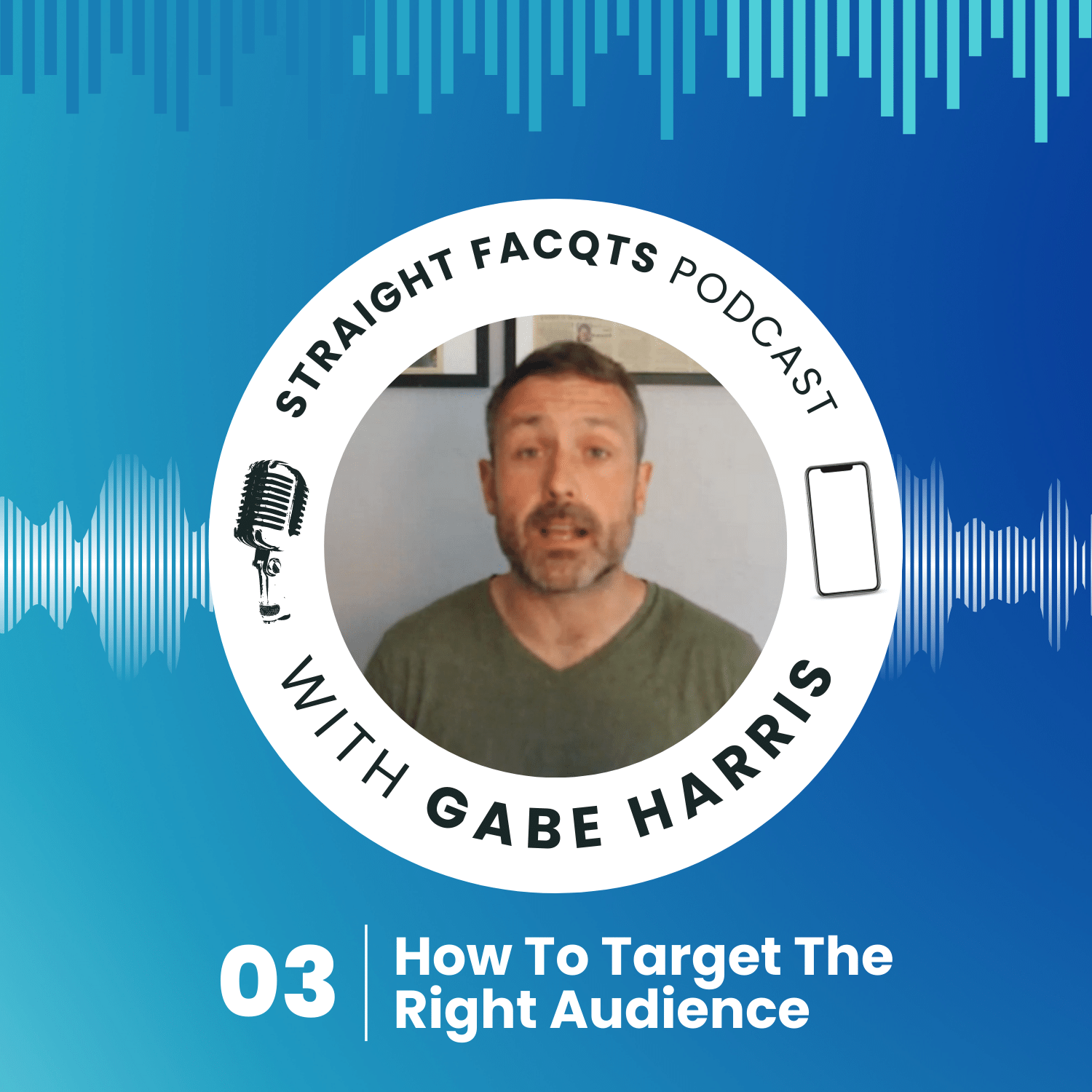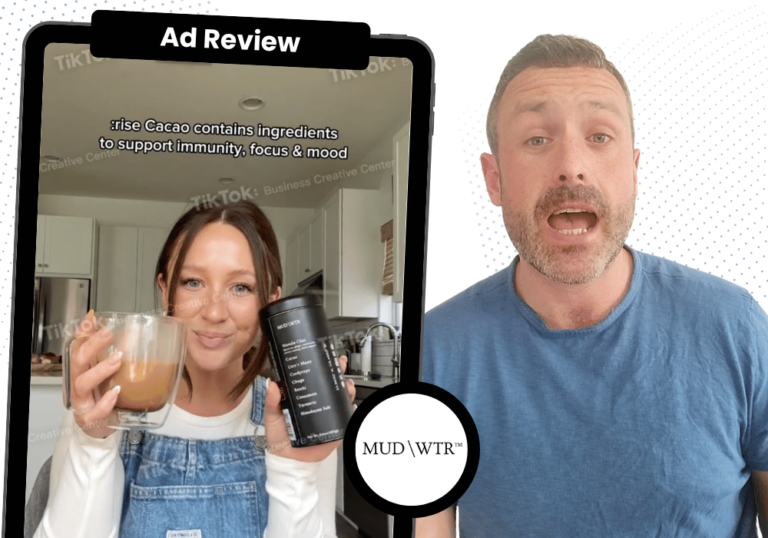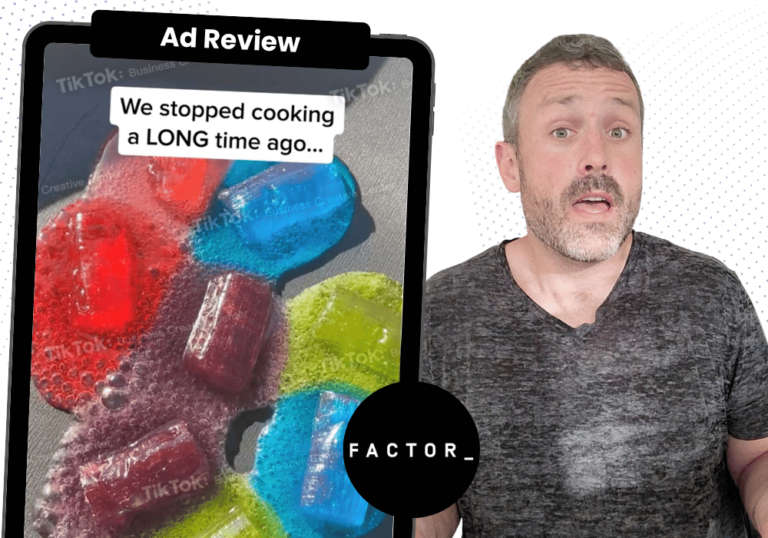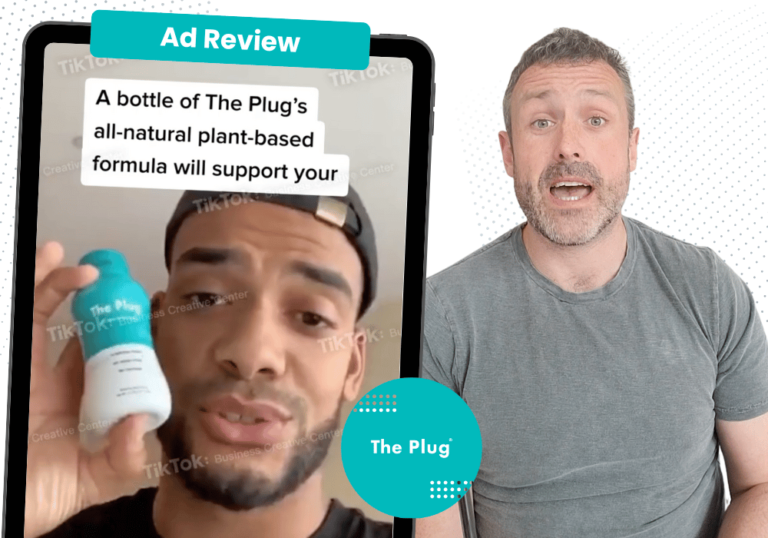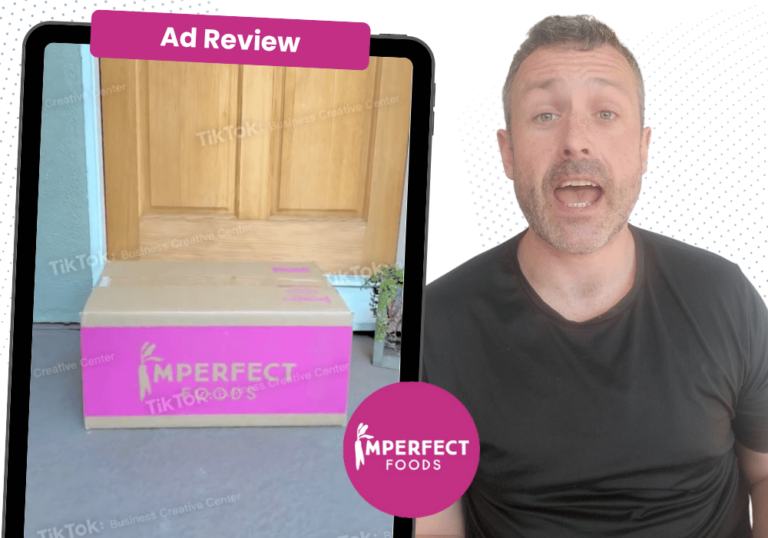It’s episode 3 of our Straight Facqts podcast and today, we’re going to discuss how you can use big data to learn how to target the right audience on Paid Social. Let’s begin!
What’s going on? My name is Gabe, and this is Straight Facqts, where we talk about Paid Social and how you can use it to scale your business.
In today’s episode, we’re going to talk about audiences and how you can be able to leverage big data to make sure you’re targeting the right person, at the right place, and at the right time. Let’s go.
“Facebook is much more heavily invested in lookalike audiences.”
When we’re talking about Paid Social, we’re specifically referring to Meta, which is Facebook and Instagram. We’re also talking about TikTok and a little bit of LinkedIn as well. But primarily the focus is going to be how audiences work on Meta and TikTok.
Now, one of the things that you should note first is just the size of these audiences. There is detailed targeting, which is going to be the platform’s internal targeting. For example, if you want to target behaviors. This could be somebody who shops on eCommerce a lot or someone who likes a particular genre of music.
You should also be aware that nearly every time you log into Meta, it’ll tell you that it’s removing another layer of detailed targeting. So, that availability that you do have is slowly being removed.
The reason why is Facebook is much more heavily invested in lookalike audiences. So when you are first starting out, it’s good to have detailed targeting because you are using Facebook’s internal data about what your audience’s behaviors are. Then the next step is going to be lookalike audiences.
“The reason why you want to use lookalikes is it gives more data points to these platforms about who your ideal audience is.”
What are lookalike audiences? Well, they essentially look like who your current audience is and you can be able to make these based off of your current customer list.
So you can upload them to Meta and say, “I want you to find people who have similar behaviors and interests in comparison to this list.”
You can also do this based off of the engagement on your current ads. Say, if you don’t have a list of 5,000 customers or 5,000 opportunities, you can tell Facebook, “I want you to create a lookalike audience of people who’ve seen 50% of my videos or more and then target people who have similar behaviors and interests.”
This would be a great way for you to do that if you don’t have the plethora of data where you can build lookalike audiences based off of your customer list. And this is going to be the same with TikTok and Meta. They are going to be similar. So, the reason why you want to use lookalikes is it gives more data points to these platforms about who your ideal audience is.
“The smallest lookalike audience in the United States is going to be 2.4 million people.”
Start off with detailed targeting if you have nothing. Then, you can quickly be able to start leveraging lookalike audiences.
One of the major differences from Paid Search to Paid Social is the size of these audiences are vastly different. Obviously, it depends on the keywords that you’re targeting for Paid Search, but with Paid Social, the smallest lookalike audience in the United States is going to be 2.4 million people. That is absolutely huge and that’s the smallest lookalike audience of 1%.
Naturally, as you grow, your audience size is going to grow as well. So say if you use a lookalike audience of a 5% or a 10%, then that audience is also going to grow immensely.
Moreover, if you’re doing a lookalike audience of 5% and you have another audience that you’re targeting with 5% as well based off two different behaviors (one could be a customer list that you gave Meta and another one could be based off people who watch 50% or more of your videos that you are advertising, or you can be able to do that organically if you haven’t done any Paid Social just quite as of yet), there’s going to be a huge audience overlap.
There’s going to be a huge overlap of audience because you’re looking at 6 million people, and that’s probably going to be closer to 7 million people of each audience of 5%. So what that does is give you diminished returns when testing different audiences.
“Let the algorithm determine which ad set to deliver those impressions to. “
It’s good that you’re giving the platforms a larger amount of data that they can use to triangulate who your audience is. However, your efforts should not be in testing audiences and I’ll explain why.
One, you’re going to get diminished returns for those test results because there’s such a big blend. You’re going to get incremental returns. Say, if you find out that audience A is better than audience B, that may be a 5% increase in performance. And that is being courteous — that there would be a 5% increase in performance.
Also, when you’re doing those tests for a 5% increase in performance, it’s going to take much longer for you to be able to get statistical significance that a particular audience is winning.
Actually, one thing I would recommend if you are testing audiences is to use CBO — Campaign Budget Optimization. Let the algorithm determine which ad set to deliver those impressions to. If you don’t, and you’re doing a side-by-side 50-50 split, it’s going to take even longer for you to be able to get those incremental returns.
That’s how you want to set it up and you should be aware of just how large these audiences are.
“Facebook’s larger investments is engineering their lookalike audience to make sure that you are targeting the right person at the right place at the right time.”
I’ll go a little bit deeper into the control that you have with these audiences. You may be asking yourself, “Why in the heck do I want to use Facebook if I’m targeting?”
If you have a niche product, how does Facebook work when you are targeting such large buckets of people? Well, I can tell you, one of Facebook’s larger investments is engineering their lookalike audience to make sure that you are targeting the right person at the right place at the right time.
There is going to be a testing period with the large buckets of audiences that Facebook is going to distribute ads to the wrong person. There’s actually reports out there that 30% of your impressions are going to the wrong audience. That’s not necessarily a bad thing because Facebook with as much data from you as possible, ideally, is able to engineer people’s behaviors and interests.
And they’re much more intelligent than we are about dictating what people’s behaviors and interests are. So by giving them more data, you’re better leveraging the machine learning to make sure that you are targeting that right person.
“Because of that engagement, it’s going to be a data point that tells Meta or TikTok that this person has an interest in what you’re delivering or what you have to offer.”
Now, you’re not going to be targeting all six or 10 million, however large your lookalike audiences are. But there will be a couple hundred thousand that those ads are going to be more specific to, depending on the product that you’re selling.
The way that you’re going to be able to control that targeting though is to know that your leads or clients that you’re picking up from these campaigns are essentially a reflection of what your ad deliverables or campaign deliverables are. So what does that mean?
Well, let’s say that you’re targeting plumbers as an example, or your ad creative is specifically calling out plumbers. Well, you’re targeting, make math easy, 10 million people. Easy math, right?
If your ad creative in the beginning specifically says, “Attention plumbers,” that’s going to get a plumber to react to the ad like, “Oh, this is about me.”
So because of that engagement, it’s going to be a data point that tells Meta or TikTok that this person has an interest in what you’re delivering or what you have to offer. Then it is going to use that data point to be able to identify future impressions, and it is then going to migrate your campaign deliverables to those people who have similar behaviors and interests.
“If you (micro-target), you are going a hundred percent against the grain, and also you’re limiting your scalability on these social platforms.”
Yes, you are delivering to a very, very large audience at first. There are big rivers of data that you’re able to latch onto where you get a couple data points and then Facebook knows, “Oh, we need to deliver this to plumbers. We’re getting early plumbers that are interacting with this ad. Let’s start shifting that budget to that big river of data that it attaches onto and then it’s going to be able to better control that targeting.”
Thus, when you get into it, you may be thinking, “These audiences are huge. That’s not who my audience is. I’m going to go micro.” And if you do that, you are going a hundred percent against the grain, against what the platform is, and also you’re limiting your scalability on these social platforms.
“Don’t go micro, go macro.”
One of the great things about Paid Social is there is more scalability on these platforms because of the amount of eyes that are consuming content on Meta and TikTok than any other platform.
For instance, if you’re doing really well on Paid Search, you’re limited on what the keywords are. If you’re doing really well on LinkedIn, you’re limited just by the amount of inventory that LinkedIn has in comparison to TikTok and Facebook.
So don’t go micro, go macro. And be sure to have your campaign deliverables call out who your ideal audience is as best as you possibly can. That’s going to give you the most efficient Cost Per Lead. If you do well by showcasing your benefit, you can be able to get a lower Cost Per Opportunity, and essentially a lower CAC (Cost Per Acquisition) as well.
But with down funnel, if you’re doing a sales model, it’s so muddy that you have less control. Ultimately though, you’re going to get a lower CAC because of the quality that your campaign deliverables are able to call out for those larger audiences. Cool!
When we’re talking about audiences, I’ll go a little bit into targeting too. I would always recommend to stick onto the platforms, which is either Facebook, Instagram, or TikTok itself, rather than using their audience placements. It’s going to be a higher-quality lead as well.
In addition to how the machine learning works and how that big data works, these platforms are engineering targeting, and they are much more intelligent about who your ideal audience is than you and I will ever be.
“They’re at their emotional peak to buy that product.”
Here’s an example about using big data in targeting somebody at their emotional peak. Say you sell yoga pants. You’re Lululemon and you are targeting broad.
By the way, we will go into another episode about how you can actually target everybody in the United States and not worry about having your Cost Per Acquisition just completely drop. Actually, that’s a good thing — your Cost Per Acquisition completely skyrocketing in price.
For instance, you’re targeting broad or very large lookalike audiences. Say, if somebody has never done yoga before. Then, their friends started talking to them about it like, “Hey, you should go.” So they do their first class together and are so excited. They go on Instagram Stories and tag the studio that they’re going to with #Namaste or whatever hashtags they want to use.
Anyways, they indicate to these platforms that they are taking a yoga class. Then, they’re done with that class and they log into their phone. They want to see all their friends who saw them post about it, and what a coincidence, they also see a Lululemon ad for yoga pants that’s perfect for them. Hence, they’re at their emotional peak to buy that product.
“By targeting broad, you’re better leveraging big data for these platforms to be able to identify when they’re at their emotional peak for your platform.”
If you did not use a broader audience, and if you went against the grain by micro-targeting, you wouldn’t be able to get that delivered impression. But by going broad, Meta is able to identify, “This person just tagged themselves at a yoga studio. They’re probably likely to purchase yoga pants or yoga apparel.”
So by targeting broad, you’re better leveraging big data for these platforms to be able to identify when they’re at their emotional peak for your platform. This is something that you and I would not be able to do if we are micro-targeting.
Ad Review: Concerts
Speaking of getting into video targeting, we’re now going to critique three videos based on their performance on Paid Social.
By the way, these videos are going to be about concerts. So there are going to be three different concert ads that we’re going rank based off of performance. Also, we are not ranking them on brand. We are specifically ranking them on acquisition. Shout out to the creator because critiquing is much easier than creating, so kudos to you guys!
The first one we’re doing is Disney Concerts. Let’s get into it.
Disney Concerts Ad
We’re listening to this with the sound off. Typically, that is going to be the normal way that audiences consume within social feeds.
So I like it. One of the things that I would like to note is they didn’t use audio captions. So for a sound off world, the audience has no idea what the person’s speaking about. All they’re seeing is somebody singing. They kind of get the deal, but it would be better to have audio captions. That way, we are able to get a little bit more context to what that visual is.
Forecastle Festival Ad
Let’s get into the next one, which is Forecastle Festival. So this is going to be multiple artists.
I like it. The opening scene talks about the festival. Then we’re able to get individual stories about the different artists that are going to be out there. If you just present a list of 30, 40, 50, even more artists, that’s going to be overwhelming. I will be like, “I have no idea who I want to watch.”
So by calling out who their top performers are, the audience is able to better attach themselves to the event. Overall, it’s pretty good. It’s also short, because typically you’d want to have the videos be under 30 seconds. There is a time and place for long form, but not for a typical audience.
Vivid Seats Ad
The last one is Vivid Seats.
That one is my favorite. And the reason why is it tells a quick story, but it also shows the individual enjoying the experience. So we’ll take the sound off.
That is a great shot. You see somebody cheering on, having fun at the event, but that one person enjoying their time really stands out.
Well, don’t get me wrong. Enjoying different concerts like in the previous festival by showing different images of the artist, that’s awesome. Boom, boom, boom, but that’s not my ultimate benefit. I would think my ultimate benefit is going to be me, myself thoroughly enjoying that time. And that’s exactly what they do here. Really, really smart.
By going up on the funnel of what’s enjoyable for somebody, it’s each individual’s happiness they’re going to get. Not like Tyler the Creator or anybody else. I want to see them, but I want to be happy. Cool. So yeah, we get that.
We also see somebody enjoying themselves at a baseball game, and then we get… Is that college football at the end? Yeah, that looks like college football. It’s quick to the point. You’re not wasting the audience’s attention, and you have a strong opening scene.
Final Rankings
So if I had to rate them, Vivid Seats, you are number one. Forecastle Festival is number two and number three is Disney Concerts.
I would put Vivid Seats as a clear number one. Forecastle Festival and Disney are side by side. But the reason why Forecastle does take the leap is it uses captions, or it’s a better use of captions. The audience is able to understand from a sound off world.
They are also more upfront about what they are. Whereas it could be a little confusing, if you’re from a sound off world, for Disney.
If we’ll go through the ad, Disney Princess: The Concert, those aren’t the strongest visualizations. This is completely from a hater standpoint because I’m sure that the ad did reasonably well, the creators did reasonably well, but that’s not the strongest visual that you can be able to get.
It was not purposely gathered for this particular ad. It almost looks like that visual was taken from somebody’s iPhone. You are going to get a deeper connection with a better shot of the concert. We could use a close up of the person singing, instead of something that’s pulled away fairly far.
But yeah, that’s how we would rank them. That was our show on audiences!
We are going to go much deeper on future podcasts about how you can be able to even better control who your audiences are with such large buckets. The one thing for you to take away from this is do not go against the grain. Do not go micro. Go with the flow. Use those larger audiences to be able to better target who your ideal audience is.
Thank you guys so much and see you on the next episode.
That’s how to target the right audience!
Watch the video here:

